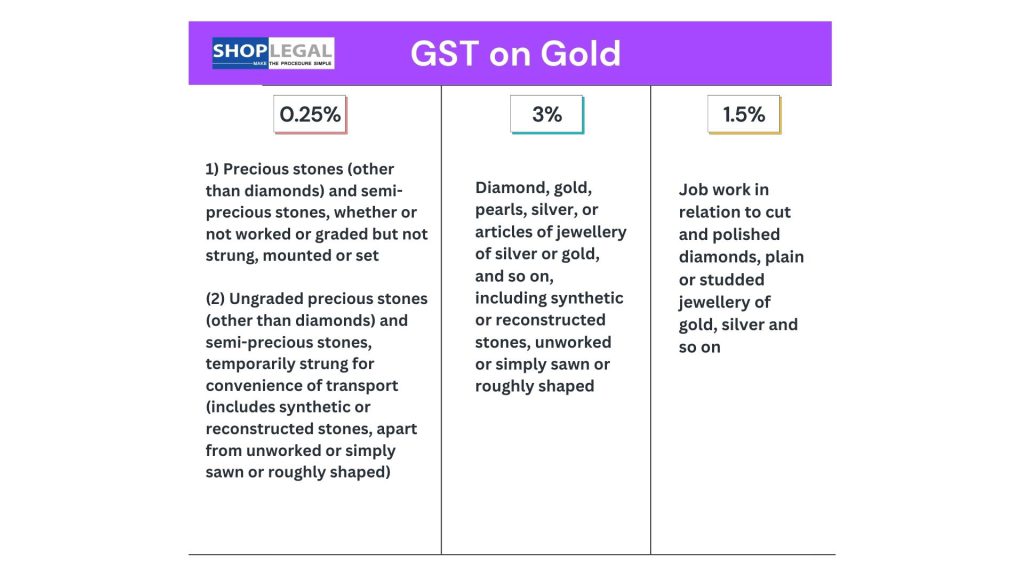GST rules for LLP
GST is known as the Goods and Service Tax. It is an indirect tax which has supplanted numerous aberrant taxes in India, for example, the excise Tax, VAT, service tax, and so on. The Goods and Service Tax Act had pass in Parliament on 29th Walk 2017 and became effective on the first of July 2017.
In other words, Goods and Service Tax (GST) is collected on the stockpile of services and goods. GST Regulation in India is an extensive, multi-stage, objective put-together tax that is required concerning each esteem expansion. GST is a solitary domestic roundabout Tax regulation for the whole country.
Under the GST system, the Tax is collected at each retail location. On account of intra-state sales, Focal GST and State GST are taxed. All the between-state sales are taxable to the Incorporated GST.
Presently, let us comprehend the meaning of GST, as referenced above, exhaustively.
Journey of GST
The GST journey started in the year 2000 when a committee was positioned to draft regulations. It required a long time from that point for the Law to develop. In 2017, the GST Bill was passed in the Lok Sabha and Rajya Sabha. On the first of July 2017, the GST Regulation came into force. By following these regulations, the GST registration in Chennai is done with a team of SHOPLEGAL experts.
Impact of GST
GST resembles the metric system – nearly everybody on the planet [other than the USA] has relocated to it. India is among the uncommon few economies that are very late to this.
The experience of the north of 160 nations is that GST accommodates a less difficult tax collection and makes it exceptionally difficult to sidestep taxes. Thus GST registration in Erode can be acquired by SHOPLEGAL at an affordable rate.
For legal companies, it makes running their interests simple and furthermore decreases the cutthroat inconvenience they customarily had from tax-evading contenders.
- Like any change of tax form, it will get expansion the present moment. Most items and services we purchase will become more expensive over the course of the following 1 year. That has been the situation in many nations taking on GST.
- The anxiety toward expansion is one explanation that progressive Indian Governments have been going delayed in GST execution.
- On the off chance that you have been maintaining a business without paying VAT/Sales Taxes, things will get more earnest to keep away from taxes. Benefits will go down. Hence obtaining GST registration in Coimbatore is important.
- In the event that you are maintaining any business, there will be chaos and confusion for the following 1 year until the accountants and business-men comprehend the standards better.
What is possible in the more drawn-out term:
- Tax collection will go up as additional individuals will be brought under the tax loop. That could permit Government to either lessen tax rates or increment services.
- It will turn out to be not difficult to run skillet India companies as you would need to manage a lesser number of tax men. At the point when more individuals run companies the opposition will cut down costs [for example see what’s going on with the cost of your versatile information after Jio came].
- It will cut down the general tax of getting costs across India and that would mean a drop in costs.
What Is LLP?
Limited Liability Partnership (LLP) has turned into a favoured type of association among business visionaries as it consolidates the advantages of both company firm and company into a solitary type of association.
The idea of the Limited Liability Partnership (LLP) was presented in India in 2008. An LLP has the attributes of both the company firm and the company. The Limited Liability Partnership Act, 2008 controls the LLP in India. At least two partners are expected to consolidate an LLP. Be that as it may, there could be no furthest breaking point on the greatest number of partners of an LLP.
Among the partners, there ought to be at least two assigned partners who will be people, and somewhere around one of them ought to be an occupant in India. The privileges and Liabilities of assigned partners are represented by the LLP agreement. They are straightforwardly liable for the consistency of the multitude of agreements of the LLP Act, 2008 and the agreement determined in the LLP agreement. The LLP agreement is important for LLP Registration in Chennai.
Benefits of LLP
On acquiring LLP Registration in Coimbatore, the following benefits are obtained. They are listed below.
An LLP has a distinct legal element, very much like companies. The LLP is particular about its partners. An LLP can sue and be sued in its name. The agreements are endorsed for the sake of the LLP Registration in Bangalore, which assists with acquiring the trust of different partners and gives the clients and providers a feeling of trust in the business.
Limited Liability of partners
The partners of the LLP have limited liability. The liability of the partners is limited to the contributions made by them. This implies that they are responsible to pay just how much contributions made by them and are not actually at risk for any misfortune in the business.
Assuming that an LLP becomes bankrupt at the hour of ending up, just the LLP resources are responsible for clearing its obligations. The partners have no private liabilities, and hence they are allowed to work as dependable money managers.
No requirement for minimum capital of LLP
The LLP can be framed with practically no base capital. There is no necessity of having a minimum paid-up capital before going for joining. It tends to be shaped by any measure of capital contributed by the partners.
Framing is getting LLP Registration in Cochin with legal support.
Less cost and maintenance
The tax of shaping an LLP is low contrasted with the tax of integrating a public or private limited company. The compliances to be trailed by the LLP is likewise low. The LLP needs to file just two proclamations every year, for example, an Annual Return and a Statement of Accounts and Solvency.
GST rules for LLP
Now, why bring in these big giants like LLP and GST here? Yes, we are going to see, the GST rules for LLP. Let’s get into it.
Each requirements to get enlisted under GST in the state from where he makes available stockpile of goods as well as services, in the event that his total turnover in a financial year surpasses Rs.20 Lakhs (Rs.10 Lakhs in North Eastern States including Sikkim)

For the most part, the risk to register under GST emerges when you are a provider inside the importance of the term, and your total turnover in the financial year is over the Exception edge of Rs.20 lakh rupees.
In any case, the GST regulation registers specific classes of providers who are expected to get compulsory registration regardless of their turnover, that is to say, the edge exception of 20 lakh isn’t accessible to them. Thus, GST registration in Bangalore is done effectively and it is eminent.
Open Current Account
A current Account is expected to be opened and the details of the Current Account Number and Bank details are required for getting GST Registration in Hyderabad. Also, you may get registration across India by SHOPLEGAL experts.
Online Application to the online portal
Apply for online form GST number with required documents (All accounts are created on the web)
Acquiring Application Reference Number (ARN)
On effective accounting of Utilization, an Application Reference Number (ARN) will be produced by the GST Portal.
Age of Client ID and Secret word at the portal
Whenever Registration is endorsed, create a client id and Secret key at the GST portal.
Download the GST Registration Certification
GST Registration certificate is now available through download from GST Portal. GST registration in Madurai can be efficiently done by our experts.
Documents Required
LLP Registration Certification
Incorporation Certificate given by Registrar
Partners Documents
- PAN and Address Proof
- Photo of the multitude of Promoters/Directors
- An authorisation letter to the Primary Signatory
- Digital Signature Certificate Approved Signatory/Signatories
Place of work Evidence
Electricity Bill or Tax Paid Receipt with the location and NOC From the Proprietor of Premises/Tenant contract (Business Reason) in Business Name
Current Account
Current Account details of Business are obligatory for acquiring GST Registration in Tirupur.
Address Verification/Tenant contract
Electricity Bill or Tax Paid Receipt with the location and NOC From the Proprietor of Premises/Tenant contract (Business Reason) in Business Name.
Remuneration of partners of LLP
Since it is a particularly fundamental part of maintaining any business, rules with respect to how the remuneration is paid have referenced in the LLP agreement itself. Each partner will, in this manner, need the greatest speculation return for their endeavours, thus, partners should be familiar with the sorts of benefits accessible so they can adjust the agreement in the correct manner. Here are the three most noticeable types of benefits while managing an LLP.
- Remuneration
- Interest on capital
- Profit Share
Types of Returns
Remuneration
This expression incorporates everything from rewards and commissions to the base remuneration that a partner or worker gets. Generally, paid partners require a functioning exertion in aiding the LLP to develop and grow. A type of payment is corresponding to the work being finished and doesn’t have a lot of association with the capital delivered by them at the beginning of the organization.
Interest
This is a type of payment that has direct associations with the capital presented by them toward the beginning of building the business. It has nothing to do with their ongoing work. Each partner probably contributed an offer or level of the complete capital required at the hour of beginning the association, and their advantage return is a decent portion of this amount. Thus, the premium they get will be some level of the amount they have contributed themselves.
Profit share
This return is on hand when the LLP begins creating a gain or creating turns cash-positive. This type of return thinks about both how much work they have placed in and the capital they have prior contributed. When the LLP starts to bring in cash, the benefit is broken down and parted into lumps as per work done, and capital has presentation and afterwards split among the partners as needs are.
Eligibility to Get Returns
Which partners get returns and which don’t is simply settled on by the conditions enrolled in the LLP agreement. Regardless of whether a partner is working, latent, dozing, dynamic or non-working, assuming it is explicitly referenced in the LLP agreement that they are to get a level of the benefit or interest, then they should be given that amount regardless of whether they merit it or have accomplished any work. On the whole, only if LLP Registration in Hyderabad is obtained, many benefits can be gotten.
Yet, this being said, there is a most extreme cutoff on remunerations given out by the LLP according to the Income Tax Act (one ought to be familiar with Form 26AS Income tax to make this filing system consistent). Likewise, the LLP agreement can’t give any remuneration or return reflectively to a period before the agreement was in force.

Amount deductible under the Income Tax Act:
- The deduction is conceivable provided that the remuneration is gotten by a functioning partner or person
- The payment of remuneration should be appropriately approved and enlisted inside the LLP agreement
- The payment due should not surpass the amounts expressed underneath
- Assuming a partner has gotten more remuneration than what is point by point underneath, that overabundance amount isn’t legitimate for any deduction and tax should be paid on it (find out around 80U allowance to make the most of allowances).
- The remuneration got by the partners is burdened as Business Pay. The portion of benefit is excluded from a similar section as remuneration
- For both working and non-working individuals, the portion of benefit returns is absolved according to Section 10(2A) of the Income Tax Act. One ought to likewise know about different sections like Section 12A and 80G Registration.
- Premium got on the capital contributed by them has additionally burdened as Business Pay
- Additionally, for the initial three lakhs acquired, remuneration can’t surpass ₹1,50,000 or 90% of book benefit, whichever amounts to be more
- At the point when offset with benefit, the remuneration can’t surpass 60% of the book benefit procured by the LLP.
- The interest got by the LLP on drawings from partners is charged as benefits and gains of business, taking everything into account
- An LLP will be burdened the same way an organization is. This implies their pay has obligation to have charge at 30%. In any case, LLPs are not qualified for the advantages of Section 44AD, which permits firms not to keep books on the off chance that their pay falls below 8% of the all-out gross
- As the LLP doesn’t circulate benefits like an organization, it isn’t qualified for any regulations under the benefit distribution tax.
Interest
- The most extreme financing cost allowable under the Annual Tax Act is 12%.
- Over this offer, anything got by the partners is available.
- The LLP Agreement must determine what the specific loan fee is and the way that it will be paid.
What wages are not permitted any deductions?
Not a wide range of pay got from an LLP that obtained LLP Registration in Salem are permitted charge deductions. Here is a gander at the sorts of pay that get no decrease.
- Pay and remuneration got by non-working partners
- Remuneration got by partners in situations where it conflicts with what has reference and approved in the LLP agreement
- In the event that remuneration lines up with what is referenced in the agreement, yet connects with a lot more seasoned piece of the deed, and doesn’t consent to the modified deed.
- Assuming that benefits from interest outperform 12% per annum
- The remuneration paid surpasses the cutoff points set by the 269th of the annual tax act.
Who we Are?
We are SHOPLEGAL. The leading business service provider. We are involved in registration of ROC/IPR/GST/IT.
Readers may scan the QR code below to share this blog.





























